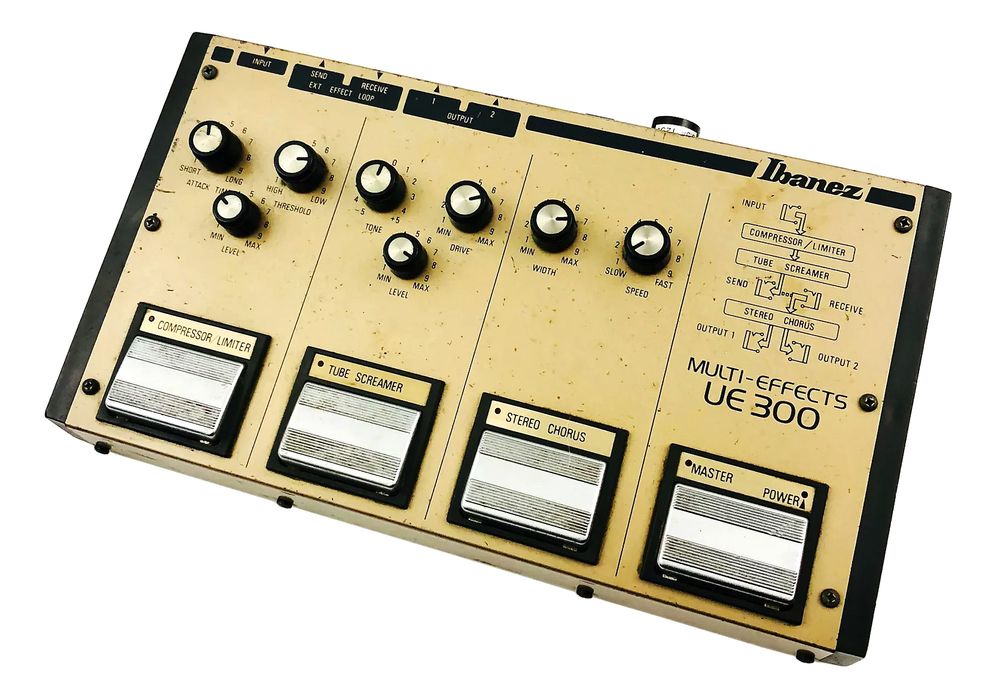3. History
The 1960s and 1970s saw the birth of guitar effect devices. In those early days, these effects were quite bulky compared to the compact pedals we have today. They also lacked the consistent power sources we take for granted, relying on batteries instead. As time progressed, the late 1970s ushered in a significant change. Manufacturers such as Boss and Ibanez introduced more compact stompboxes that could be powered by a separate power supply. This transition made it logical to combine multiple effects into a single unit, simplifying the musician's setup. In 1982, Ibanez made a big move with the UE-300. This pedal was a real innovation. It crammed three popular individual effects – the CP-9 (Compressor), TS-9 (Overdrive), and CS-9 (Chorus) – into one big pedal.

Ibanez UE-300
The early effect units didn't have any memory, and they did their magic all in the analog world. But things started to change. In 1987, Roland/Boss dipped their toes into the multi-effects world with the GP-8. Then, in 1988, they followed up with the ME-5.

Roland GP-8
They packed in eight cool effects that you could save in different combinations. This was a game-changer in the multi-effects world. Back in the '80s, we also started seeing 19" rack-mounted multi-effects units like the Lexicon PCM-70 or the Yamaha SPX-90. Guitarists got a kick out of these, even though they weren't initially meant for guitars. They were versatile tools that folks used in studios and on stage for all sorts of instruments.
The high demand from guitarists led to the introduction of more and more multi-effects units designed specifically for guitars over time.



